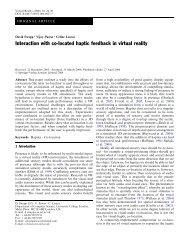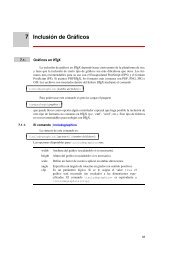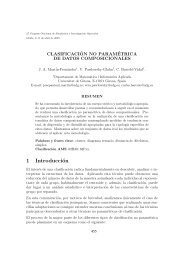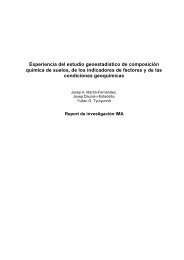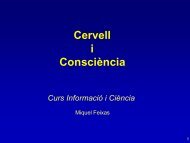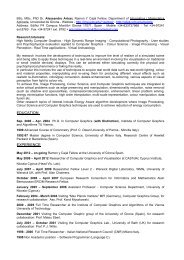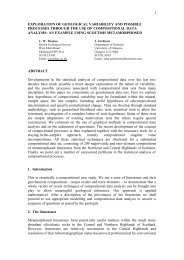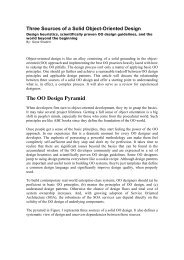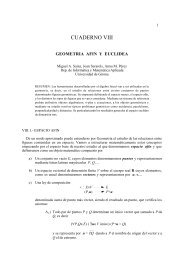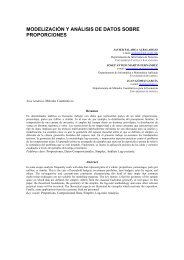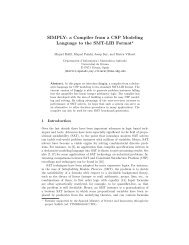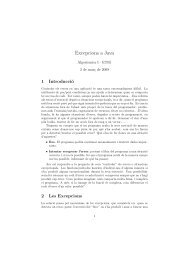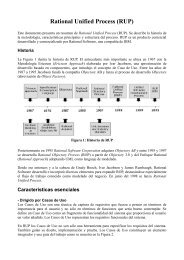Optimization on Inverse Reflector Design
Optimization on Inverse Reflector Design
Optimization on Inverse Reflector Design
You also want an ePaper? Increase the reach of your titles
YUMPU automatically turns print PDFs into web optimized ePapers that Google loves.
List of Figures1.1 Overall scheme of this thesis. The orange boxes are the problemsto solve, and the yellow boxes are the soluti<strong>on</strong>s. Theboxes with text in bold are the developed soluti<strong>on</strong>s in thisthesis. . . . . . . . . . . . . . . . . . . . . . . . . . . . . . . . 22.1 G<strong>on</strong>iophotometer system descripti<strong>on</strong>, as is shown in [Ash93] . 92.2 Lumigraph descripti<strong>on</strong>. Each ray is represented by a 4D parameterizati<strong>on</strong>of a pair of cells in two parallel planes. In theexample, the ray is represented by (u i , v j , s p , t q ), where u i ,v jand s p ,t q are the cell coordinates for first and sec<strong>on</strong>d planesrespectively. . . . . . . . . . . . . . . . . . . . . . . . . . . . . 102.3 Light ray tracing descripti<strong>on</strong>. . . . . . . . . . . . . . . . . . . 122.4 Phot<strong>on</strong> Map (left) and Caustic Map (right) creati<strong>on</strong>. Thesphere (bottom) is used as density estimator over the KD-Treethat c<strong>on</strong>tains the maps . . . . . . . . . . . . . . . . . . . . . . 142.5 Bounding Volume Hierarchy example. . . . . . . . . . . . . . . 162.6 Full screen quad technique. A quad is rendered <strong>on</strong> the fullviewport. The viewport has the same size than the desiredoutput texture. Then, each pixel becomes a fragment that isprocessed by a GPU fragment shader. . . . . . . . . . . . . . . 182.7 Binary Search algorithm . . . . . . . . . . . . . . . . . . . . . 202.8 Sphere Tracing algorithm . . . . . . . . . . . . . . . . . . . . . 212.9 Relief Mapping algorithm. . . . . . . . . . . . . . . . . . . . . 222.10 Quadtree Relief Mapping algorithm. . . . . . . . . . . . . . . . 232.11 Example of Hooke & Jeeves optimizati<strong>on</strong> method for a functi<strong>on</strong>of two parameters (P 1 , P 2 ). The node numbers show theoptimizati<strong>on</strong> progressi<strong>on</strong>. The gray squares are the point shiftingsal<strong>on</strong>g the axis. Note that in nodes 4 and 6 no new pointproduces better results, thus the shift jump size is reduced andthe process starts again at the same point. . . . . . . . . . . . 25v



